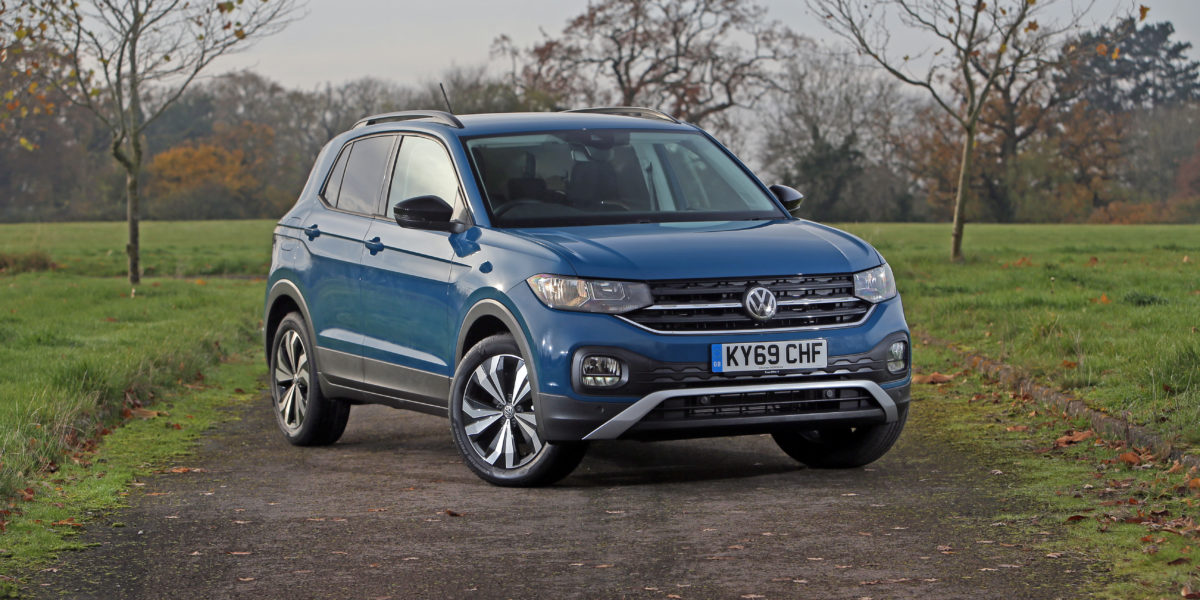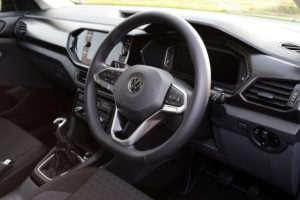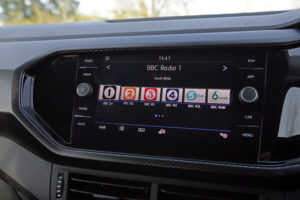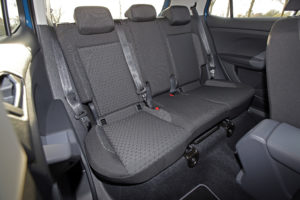
The specs
| Model tested: | VW T-Cross 1.0 TSI SE |
|---|---|
| Price: | £19,995 |
| Engine: | 999cc |
| Power: | 114bhp@5000rpm |
| Transmission: | 6-speed manual |
| 0-62mph: | 10.2 seconds |
| Top speed: | 120mph |
| Economy / CO2: | 45.7mpg/116g/km |
| Insurance: | 10 |
Review: VW T-Cross (Overall score 4.5/5)
SUVs of every size are becoming ever more popular across Europe, thanks largely to an elevated driving position that offers a greater sense of security. The Volkswagen Group has embraced SUVs in a big way, with a raft of models of every size offered across its brands. Its smallest SUVs come in Skoda (Kamiq), SEAT (Arona) and Volkswagen (T-Cross) forms and it’s the latter that we’re testing here, a year after the first examples arrived in the UK. Known as ‘B-segment SUVs’, these cars are around the same width and length as their supermini cousins, but they typically sit about 130mm higher, which is why the T-Cross is effectively a Polo on stilts – not that it drives that way.
Cabin (4.5/5)
There are no surprises here, as the VW’s cabin is superb, with an excellent standard of fit and finish, plus a clearly laid out dashboard. The fully digital instrumentation is a model of clarity with an array of personalisation options at the touch of a button. With plenty of adjustment for the seats, steering wheel and seatbelts it’s a doddle to get comfy, and the intuitive multimedia system is every bit as slick as you’d expect from VW, with a superb sound.
Throw in decent cubby hole space along with ample head and leg room for rear seat passengers and the VW’s cabin is a winner. It’s not perfect though; the boot is small and there’s no spare wheel, although there is room for one.
Driving (4/5)
There are just two engines available: a 1.0 TSI petrol unit in 94bhp or 114bhp forms, or a 94bhp 1.6 TDI diesel. The 94bhp 1.0 TSI gets a five-speed manual gearbox as standard, while all other T-Crosses get an extra ratio; a seven-speed DSG auto is optional on the diesel and 114bhp 1.0 TSI. Both engines are excellent and on paper they offer similar economy; in the real world the diesel is likely to be usefully more frugal, it’s also more torquey at low revs. While the TSI engine is flexible and perky, it has little to offer below 2,000rpm, whereas the change-up light comes on 200rpm earlier. Compared with the very light controls of Japanese or Korean cars, the VW’s pedals and gearchange are actually quite heavy, though they’re still well weighted and the gearchange is very smooth. The suspension is very well judged too; the ride isn’t crashy, while avoiding being too wallowy in bends, but hit a bump mid-corner and the car can skip at the back. Incidentally, the handbrake is a conventional item rather than electronic.
Costs (4/5)
The T-Cross comes in S, SE, SE-L and R-Line forms; the 1.0 TSI SE tested here is expected to be the most popular derivative of all. We can see why as it’s all you need. It’s well equipped and the engine is a peach. The 94bhp T-Cross 1.0 TSI S starts at £17,395 and comes with alloy wheels, eight-inch screen with Bluetooth and DAB radio, air-con and a suite of driver assistance systems.
The SE adds £1,850 for bigger alloys (17″ instead of 16″), a better alarm, split-level boot, automatic wipers and headlights plus adaptive cruise control. As such the S trim is all you need, but if you want a diesel you’ll have to buy at least an SE (for £21,955), while an automatic transmission adds another £1,500 regardless of engine or trim level. The 1.0 TSI is rated at around 45mpg in manual form (43mpg for the auto), whereas the diesel is pegged at 53mpg in manual form and 51mpg as an auto. Insurance is 8-12 for TSI models and 8-11 for TDIs.





